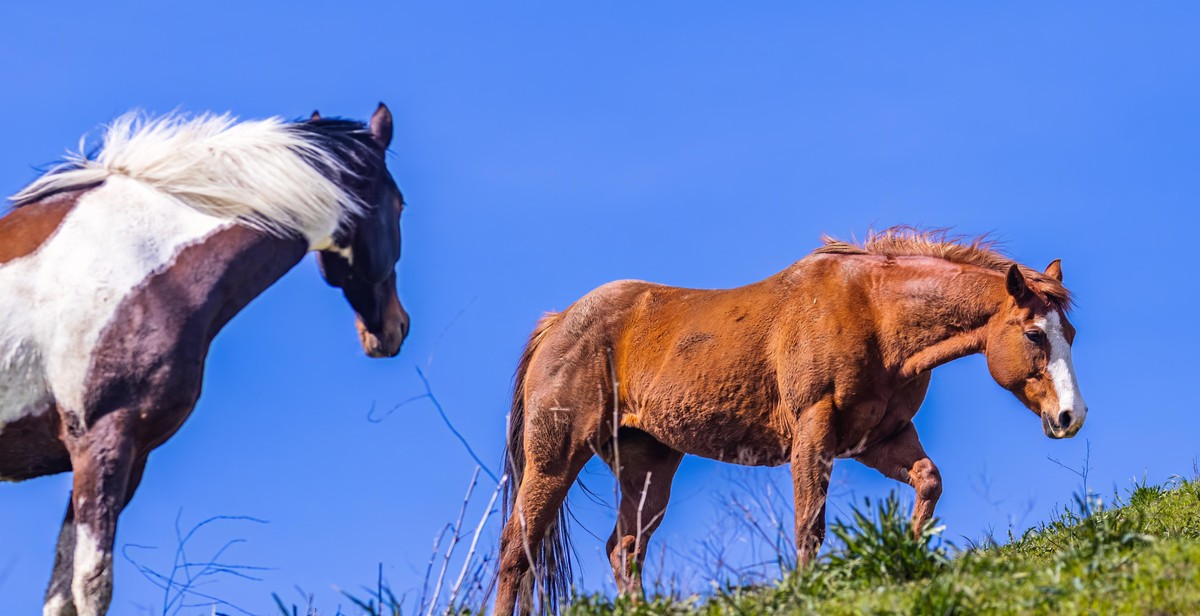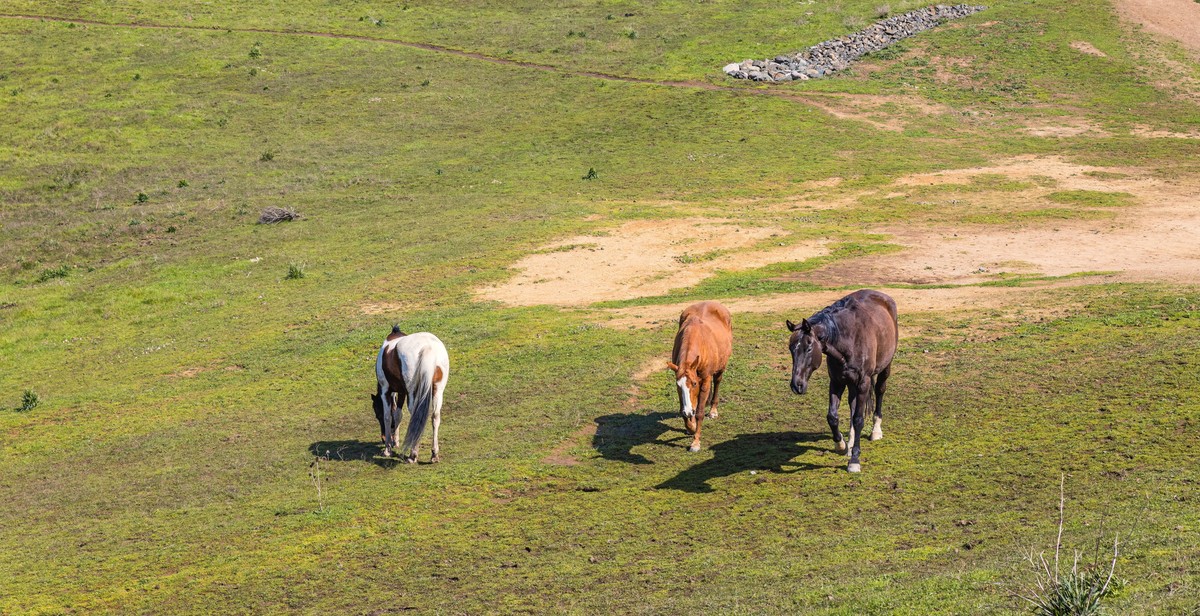How to Introduce a New Horse to the Herd: Steps for Successful Horse Introductions
Introducing a new horse to an established herd can be a daunting task. Horses are herd animals and their social structure is based on dominance and submission. When a new horse is added to the group, there can be a lot of tension, aggression, and even injury. That’s why it’s important to take the necessary steps to ensure a successful introduction.
Why Introducing Horses to the Herd is Important
Horses are social animals and thrive in a herd environment. In the wild, horses form strong bonds with other horses and rely on each other for protection, companionship, and grooming. Domestic horses are no different. Keeping horses in a herd allows them to express their natural behaviors and form social bonds. It also helps them feel more secure and reduces stress.
However, introducing a new horse to an established herd can be challenging. Horses are territorial animals and can be very protective of their space and resources. The introduction process needs to be carefully planned and executed to minimize the risk of injury and ensure a peaceful integration into the herd.
- In this article, we will discuss the steps you can take to successfully introduce a new horse to an existing herd.
- We will cover everything from preparing the horses for the introduction to monitoring their behavior after the introduction.
- By following these steps, you can help ensure a smooth transition for the new horse and the rest of the herd.

Step 1: Isolate the New Horse
Introducing a new horse to the herd can be a daunting task, but with the right preparation, it can be a smooth and successful process. The first step is to isolate the new horse from the rest of the herd for a few days to a week.
Reasons for Isolating the New Horse
Isolating the new horse allows them to acclimate to their new surroundings and reduces the risk of injury or illness. Here are some reasons why it’s important to isolate the new horse:
- Prevent the spread of disease: Isolating the new horse prevents the spread of any contagious diseases they may have brought with them.
- Reduce stress: Being introduced to a new herd can be stressful for a horse. Isolating them for a few days allows them to settle in and adjust to their new environment.
- Observe behavior: Isolating the new horse allows you to observe their behavior, eating habits, and overall health without the influence of the other horses.
- Establish hierarchy: When introducing a new horse to the herd, there may be some initial squabbles as the horses establish their hierarchy. Isolating the new horse allows them to establish their rank without the risk of injury.
How to Isolate the New Horse
Here are some tips on how to isolate the new horse:
- Choose a safe location: Choose a safe and secure location for the new horse to stay in isolation. The area should be large enough for the horse to move around comfortably and have access to food and water.
- Introduce slowly: Introduce the new horse to the isolation area slowly. Allow them to explore their new surroundings at their own pace.
- Provide comfort: Provide the new horse with plenty of hay, fresh water, and a comfortable place to rest.
- Monitor closely: Monitor the new horse closely during their isolation period. Observe their behavior, eating habits, and overall health.
- Gradual introduction: After the isolation period, gradually introduce the new horse to the herd. Start with short periods of supervised interaction and gradually increase the amount of time they spend together.
Isolating the new horse is an important step in introducing them to the herd. By following these tips, you can ensure a safe and successful introduction process for your horses.

Step 2: Observe the Horses’ Reactions
Introducing a new horse to the herd can be a stressful experience for both the new horse and the existing members of the herd. That’s why it’s important to observe the horses’ reactions during the introduction process.
Why Observing is Important
Observing the horses’ reactions during the introduction process can help you determine if the new horse is being accepted into the herd or if there are any issues that need to be addressed. It can also help you identify any potential safety concerns and prevent injuries to both the new horse and the existing members of the herd.
What to Look for During Observation
When observing the horses’ reactions, there are a few key things to look for:
- Body language: Pay attention to the horses’ body language. Are they relaxed or tense? Are they showing any signs of aggression or fear?
- Interactions: Watch how the horses interact with each other. Are they sniffing and nuzzling each other or are they kicking and biting?
- Eating habits: Keep an eye on the horses’ eating habits. Are they eating normally or are they too distracted by the new horse?
It’s important to remember that some degree of aggression and posturing is normal during the introduction process. However, if the horses are showing signs of extreme aggression or fear, it may be necessary to separate them and try the introduction process again at a later time.
| Positive Signs | Negative Signs |
|---|---|
| – Sniffing and nuzzling | – Kicking and biting |
| – Eating normally | – Too distracted to eat |
| – Relaxed body language | – Tense body language |
By observing the horses’ reactions and taking the necessary precautions, you can ensure a successful introduction and a happy, healthy herd.

Step 3: Introduce the Horses
Once you have prepared the area and the horses, it is time to introduce them. You should always introduce horses gradually and carefully to minimize the risk of injury and aggression.
How to Introduce the Horses
Begin by leading the new horse into the designated area and allow it to look around and become familiar with its surroundings. Then, bring in one or two of the most dominant horses from the established herd. Keep the horses at a safe distance from each other and monitor their behavior closely.
If the horses seem calm and relaxed, you can gradually move them closer together. Allow them to sniff and touch noses, while keeping a close eye on their body language. If they begin to show signs of aggression, such as pinned ears or raised tails, separate them immediately and try again later.
Continue introducing the horses gradually, adding one or two horses at a time, until all the horses are in the same area. Be patient and take your time. It may take a few days for the horses to become fully acclimated to each other.
What to do if There is Aggression
If any of the horses show signs of aggression, separate them immediately and try again later. If the aggression persists, you may need to separate the horses permanently or seek the assistance of a professional trainer.
It is important to remember that horses are herd animals and thrive on social interaction. With patience and care, you can successfully introduce a new horse to an established herd and create a harmonious environment for all your horses.

Step 4: Monitor the Horses
After introducing your new horse to the herd, it is crucial to monitor the horses to ensure a successful introduction. Monitoring helps you identify any potential issues and take appropriate action before they escalate.
Why Monitoring is Important
Monitoring is essential because horses are social animals that form hierarchies within the herd. Introducing a new horse can disrupt the established hierarchy, which can result in aggressive behavior and even injuries. Monitoring the horses helps you identify any signs of aggression, discomfort, or stress, giving you the opportunity to address the issues before they escalate.
What to Look for During Monitoring
During monitoring, you should pay attention to the horses’ body language, behavior, and interactions with each other. Some of the things to look for include:
- Aggressive behavior: Watch for any signs of aggression, such as biting, kicking, or chasing. If you notice any aggressive behavior, separate the horses immediately.
- Discomfort: Keep an eye on the new horse for any signs of discomfort, such as pacing, sweating, or refusing to eat or drink. If you notice any of these signs, check for injuries or illnesses and provide appropriate care.
- Social interactions: Observe how the horses interact with each other. Ideally, the horses should establish a new hierarchy without any major incidents. However, if you notice any bullying or exclusion, intervene to prevent any injuries or stress.
| Behavior/Interaction | New Horse | Established Herd |
|---|---|---|
| Aggressive behavior | X | X |
| Discomfort | X | |
| Social interactions | X | X |
By monitoring the horses, you can ensure a smooth and successful introduction. Remember to be patient and allow the horses time to adjust to each other. With proper monitoring and care, your new horse will soon become a valued member of the herd.

Conclusion
Introducing a new horse to the herd can be an exciting yet challenging experience. It requires patience, planning, and careful observation to ensure a successful introduction. By following the steps outlined in this article, you can increase the chances of a smooth and stress-free introduction for both your new horse and the existing herd.
Remember, every horse is unique, and not every introduction will go as planned. It’s essential to be flexible and adjust your approach based on your horses’ reactions and behaviors. Always prioritize the safety of your horses and yourself when introducing a new horse to the herd.
Finally, it’s essential to monitor your horses closely after the initial introduction. Keep an eye on their interactions, eating habits, and overall behavior to ensure they are adjusting well to the new dynamic. With patience and persistence, your horses can form strong bonds and live harmoniously in their herd.
Key Takeaways
- Plan and prepare for the introduction carefully, considering factors such as space, timing, and herd dynamics.
- Introduce the horses gradually, starting with visual and scent introductions before progressing to physical introductions.
- Observe your horses’ body language and behavior during the introduction, and be prepared to adjust your approach if necessary.
- Prioritize safety and monitor your horses closely after the introduction to ensure they are adjusting well to the new dynamic.
| Remember: | Introducing a new horse to the herd can take time and patience, but with the right approach, it can be a successful and rewarding experience for both you and your horses. |
